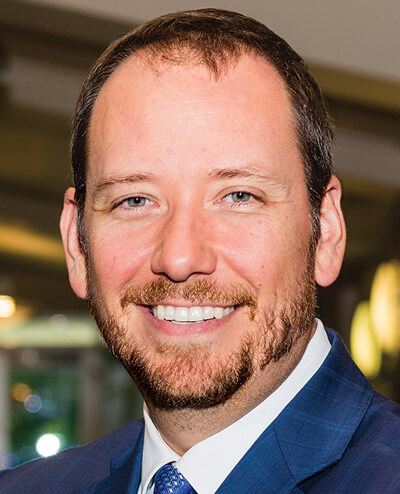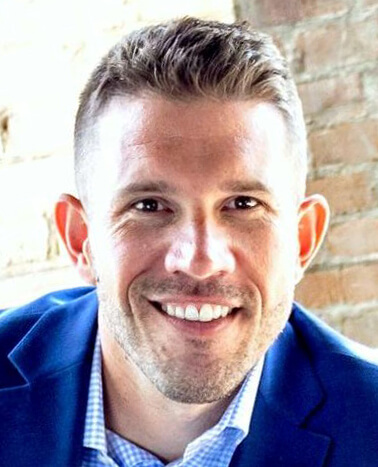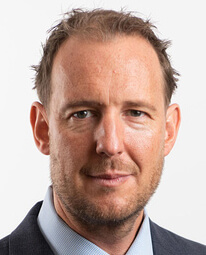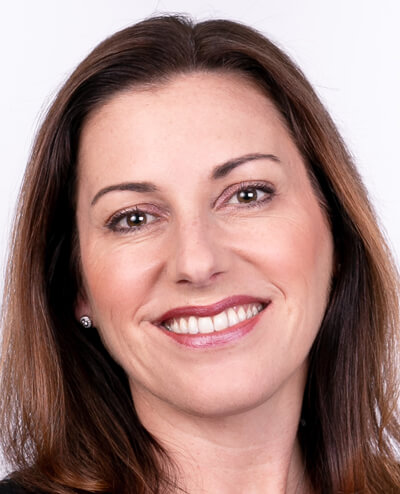
Brown: We have always been resistant to change, as a practice, and resistant to technology as well. We have processes that worked really well, and we didn’t really see the need to change them, although we were aware that the technology was out there. However, when we went into COVID lockdown, we realized that we were going to have to change things quickly. So, we brought in a new digital client portal in July last year, and it’s a much more interactive experience for the clients now. It’s taken client engagement to another level; it’s fantastic.
We now carry out all our of meetings on there. Clients can electronically sign documents, and we’ve got paperless applications for things. They can upload documents securely to a vault, so they’ve got document storage, and they can also message us; it’s almost instant messaging. Clients can also instigate meetings and request advice on the portal, so for them, it’s a much more interactive process, and they can really feel part of our family, as though they’re really involved in their own financial planning experience. The engagement is fantastic, and it has streamlined our processes as well.
Marshall: We had to pivot along with other businesses to be able to deal with the new world, and we needed to get clients engaged even if we were not able to meet them in person. That means getting them prepared for the meetings with us. Whether we are meeting in person or virtually, whether it’s that first initial discovery meeting or maybe a follow-up annual planning meeting, we’ve got premeeting questionnaires that we mail out. They can have that in paper form or as a Jotform online, which really helps to get our clients ready for the topics that we need to discuss during those meetings. And we are also giving clients the opportunity to engage with us by scheduling their meetings online as well, using Calendly, which means they are just going straight into the diary. And you know what? If they need a Zoom link, it’s generated automatically as well. It really works.
Olson: For us, client engagement has moved entirely virtual over the course of the last 18 months. We foresee a hybrid model for the future, in which we meet virtually or in person at our offices. Otherwise, for our enterprise clients, we do suspect there is going to be a degree of interest in conducting meetings again face-to-face, onsite at their place of business beginning in 2022. But today we are leveraging such a greater degree of data-driven processes, horizontally integrated technologies and all around the concept of creating a more seamless client experience.
Additionally, we are able to bring in a greater degree of resources to the table, by now virtually connecting our clients with individuals of varied degree skills and talents globally. And I think, last but not least, a big change that’s made a difference for our clients is we are now allocating a portion of each meeting to talk just about the integration of technology and how they will use technology, through the outlay of our time together, to create a more mutually meaningful engagement.
Brown: During the last 12, 18 months, we’ve tried to be really creative in the way that we interact with our clients as well as bringing in the client portal. And we were really conscious that a lot of clients might be feeling scared and isolated, particularly early on, so we wanted to reach out to them. We’ve always sent birthday cards and Christmas cards as a way of keeping in touch, but we wanted to do more. And so, to date, we’ve held an online wine tasting event; we’ve had a cook-along with a Michelin-starred chef on Zoom; we’ve had various webinars on finance related topics; and we’ve also had some well-being webinars as well. We’re currently doing a sunflower competition where we sent all our clients some seeds through the post, asked them to plant them, take photos and tag us on social media, and then there’s a prize for the tallest sunflower at the end of the month. But we’ve also been really involved in community projects as well, which have posted on social media to build our brand profile and really try to engage more with the local community, with our clients and also with prospects further as well.
Marshall: We pivoted last year because we wanted to engage with our clients, and so I think about Blooming Isolation, which was a competition that we ran. This was really great fun. We knew people were gardening, so we said, “Send us your pictures and we’ll judge them, and the winner’s going to get to pick who the charitable donation’s going to be made to,” because for each entry that we received, we put money aside to donate to charity. We ended up with three that we just could not choose between, and, in fact, one of them was a beautiful hand-drawn picture of all of the flowers that were growing in their particular garden. So, we had to let that in to win as well.
We’re doing other things to add to engagement as well because it’s not just about helping clients to engage with us, as a practice, outside of that review or that planning process, if you like. It’s about what more can we do to give them a reason to want to meet virtually. COVID isn’t an excuse to do things virtually and to be mediocre; it’s an opportunity to be the best at what you do.
Olson: I think Ed made a great point. This is not the impediment; this is the opportunity. And I think the more quickly we can align around that story and that vision, the better we are all going to be moving forward.
Tech integration aside, for our firm, I think we’re more curious consultants, more prepared and better prepared advisors than we were previously. A few best practices are that we are now providing a better degree of clarity and expectation to our clients and prospects for every meeting we conduct. That includes sending agendas highlighting our thoughts in advance of what we intend to cover in person. We’re now outlining our goals in the meeting and throughout the course of conversation with a greater degree of crystallization. We’re establishing next meeting dates before we close a meeting because we have all access to our digital calendars right in front of us. And we’re always following up recap emails. I think on the conversational side of things, we’re rehearsed, we’re prepared, we’ve eliminated industry lingo and we’re focused on having more relatable conversations, which means we are listening more than we are speaking. None of this is groundbreaking, but I think it’s evident now in the environment that we’re in today how poor we became at some of these things when face-to-face was the medium for interaction for 100 years in our industry.
Brown: For all the interactions that we have now with an advisor, whether it’s the discovery meeting, which we call our first meeting, an implementation meeting or even an annual planning meeting, we send our clients a questionnaire via email after the event asking them for their thoughts, how they think it went. Is there anything they felt that we could do better? What would they like to see going forward?
And so, we are really trying to achieve a net promoter score. We’re not quite there, but it’s something we are working toward. But currently, 55 percent of all our new business comes from client referrals, and 40 percent is from existing clients. So, it’s clear that getting engaged clients who become advocates for your business is really key and keeping them engaged is so important.

Timothy D. Clairmont, CFP, MSFS, an 11-year MDRT member with one Court of the Table and 10 Top of the Table honors, is founder of the ClearFP companies, a bestselling author, public speaker and a Platinum Knight of the MDRT Foundation.

David W. Olson Jr., a two-year MDRT member with two Top of the Table honors, is a leader in holistically integrated financial consulting, commercial finance, wealth management, group benefit and retirement planning design. He was also recently recognized as a “40 under 40” business leader in his home state of Michigan.; Edward F. Marshall, APFS, is a four-year MDRT member with one Court of the Table and three Top of the Table honors. He focuses on understanding his clients’ deepest values and supporting them as they achieve their goals with confidence.

Edward F. Marshall, APFS, is a four-year MDRT member with one Court of the Table and three Top of the Table honors. He focuses on understanding his clients’ deepest values and supporting them as they achieve their goals with confidence.

Carla A. Brown FPFS, a four-year MDRT member with four Top of the Table honors, is the founder and managing director of Oakmere Wealth Management Ltd. and is based in North West England.

